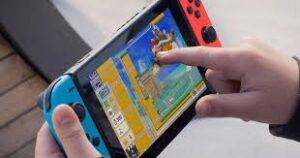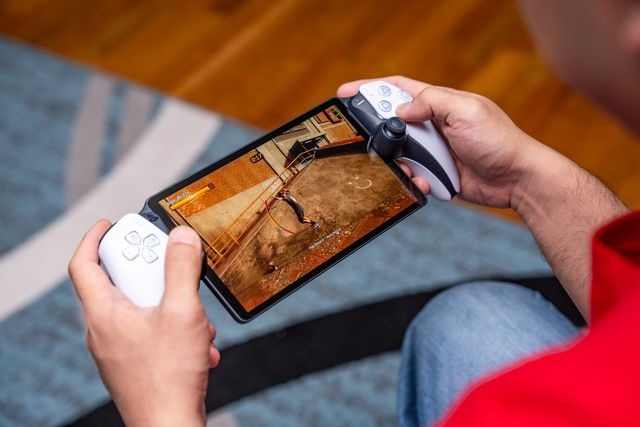Sony has officially stepped into the competitive handheld gaming arena, unveiling plans for a device aimed at rivalling the offerings of Nintendo and Microsoft. This move signals a renewed interest in portable gaming, a segment that Sony had largely stepped away from following the discontinuation of its PlayStation Vita. With this development, Sony intends to carve out a unique space in a market dominated by Nintendo’s Switch and cloud-based portable solutions from Microsoft and others.

A Strategic Return to Handheld Gaming
Sony’s previous ventures in handheld gaming include the PlayStation Portable (PSP) and its successor, the PlayStation Vita. While the PSP achieved significant commercial success, the Vita struggled to maintain momentum due to limited software support and stiff competition. Sony’s return to handheld gaming is a calculated strategy that leverages advancements in technology and a growing demand for versatile gaming platforms.
The new device, which remains unnamed at this stage, is positioned not merely as a successor to the Vita but as an entirely new offering designed to integrate seamlessly with the PlayStation ecosystem. By focusing on interconnectivity and leveraging the power of its existing PlayStation 5 hardware, Sony is hoping to appeal to a demographic seeking a hybrid gaming experience.
Features and Specifications
Details about the handheld’s technical specifications remain speculative at this stage, but early leaks and reports suggest that Sony is aiming for a device capable of high-definition gaming. This approach contrasts with the Nintendo Switch’s focus on portability and Microsoft’s reliance on cloud gaming.
The device is expected to include a high-resolution display and robust processing power, likely drawing on architecture similar to that of the PlayStation 5. This compatibility would allow gamers to stream or play PS5 titles on the handheld, using either local connectivity or cloud technology. The handheld could potentially support adaptive triggers and haptic feedback, replicating the immersive features of the DualSense controller.
While hardware innovation is vital, Sony’s focus will likely also extend to software and services. A seamless connection to PlayStation Network, including access to PS Plus titles and remote play capabilities, would strengthen the handheld’s appeal.
Competition in the Handheld Space
Sony faces stiff competition from entrenched players in the handheld market. Nintendo’s Switch, with its hybrid design, has enjoyed massive success since its launch, thanks to a compelling library of exclusive games and portability. Microsoft, meanwhile, has leaned heavily on cloud gaming, allowing gamers to stream titles across various devices, including smartphones and tablets.
To compete effectively, Sony needs to offer something distinct. Unlike Nintendo’s focus on exclusives and Microsoft’s emphasis on flexibility, Sony is likely betting on a premium experience that complements its existing console offerings. By creating a device that allows users to transition seamlessly between their PS5 and the handheld, Sony could bridge the gap between home and portable gaming.
Market Trends and Consumer Demand
The renewed interest in handheld gaming can be attributed to changing consumer habits. Gamers are increasingly seeking platforms that offer flexibility without compromising on performance. The success of the Steam Deck, a handheld gaming PC that caters to enthusiasts, highlights the demand for devices capable of delivering high-quality experiences on the go.
Sony’s handheld could capitalize on this trend, provided it balances price, performance, and software support effectively. One critical factor will be its game library. A strong lineup of first-party and third-party titles will be essential to ensure long-term viability.
Challenges and Opportunities
While the potential is significant, Sony’s handheld project also faces notable challenges. Pricing will be a key consideration, as the device needs to be affordable enough to attract casual gamers while offering enough value to justify its existence alongside the PS5. Additionally, competition for developer resources could be an issue, as studios prioritize larger install bases like the PS5 and Switch.
On the flip side, Sony has an opportunity to redefine handheld gaming by creating a device that combines the best of traditional consoles and modern portable platforms. By leaning on its strengths—such as exclusive franchises, innovative hardware, and a loyal fan base—Sony could set a new benchmark in the industry.
Broader Implications for Gaming
Sony’s re-entry into the handheld market reflects a broader evolution in gaming. The lines between traditional and mobile gaming continue to blur, driven by advancements in cloud technology, 5G networks, and consumer demand for flexibility. A successful handheld from Sony could accelerate this trend, influencing how other companies approach hardware development.
In the coming months, more details about Sony’s handheld device are expected to emerge, shedding light on its pricing, release date, and software support. For now, the gaming community waits with anticipation, eager to see how Sony’s ambitious plans unfold in a competitive and ever-changing market.










Add Comment